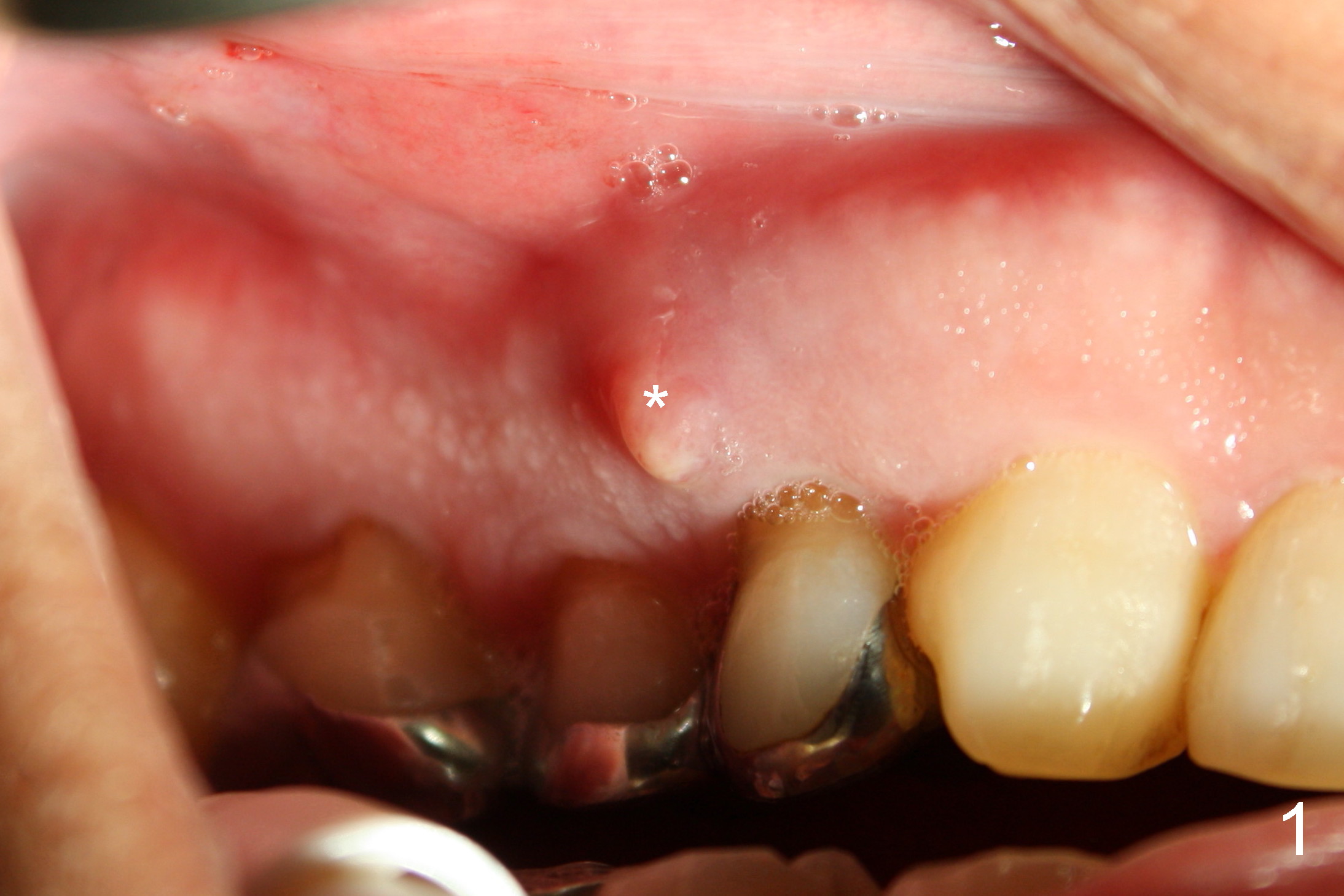
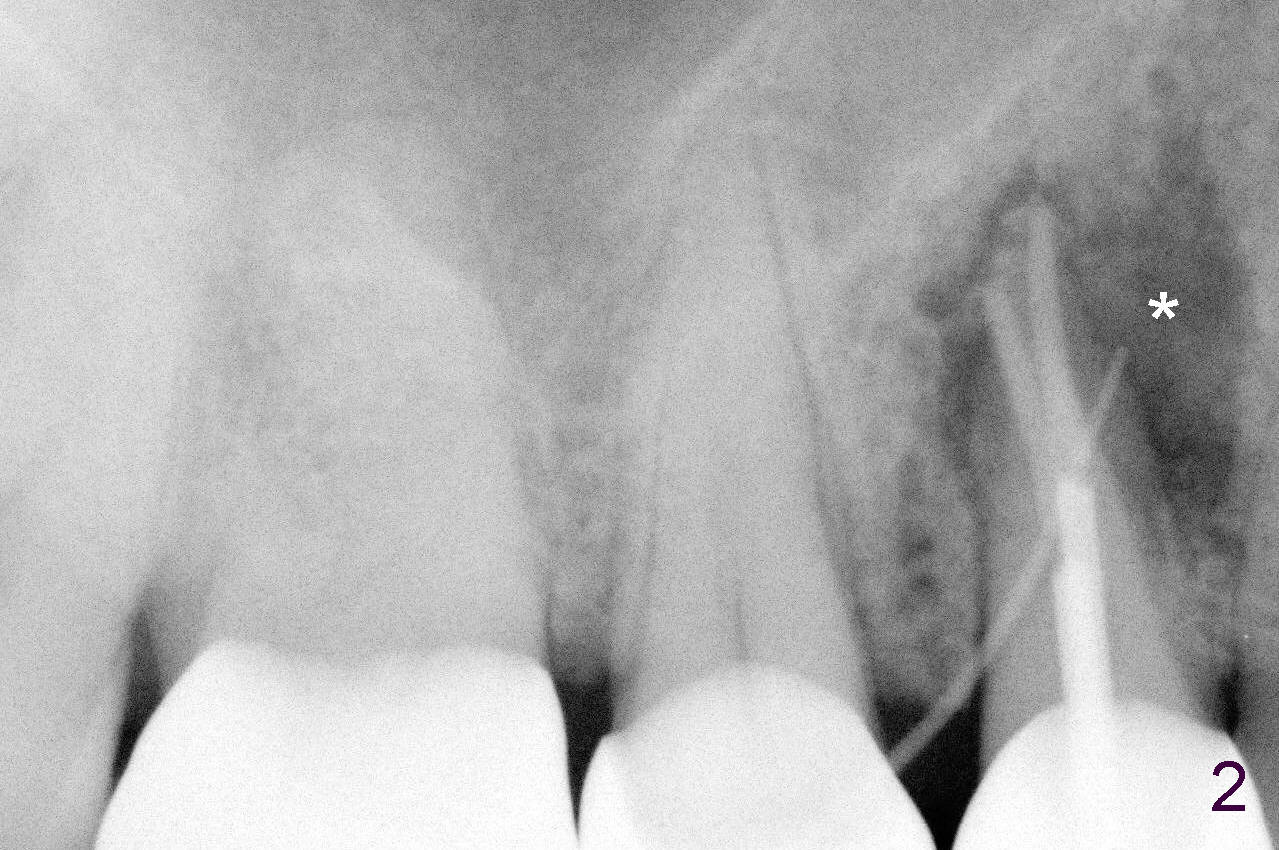
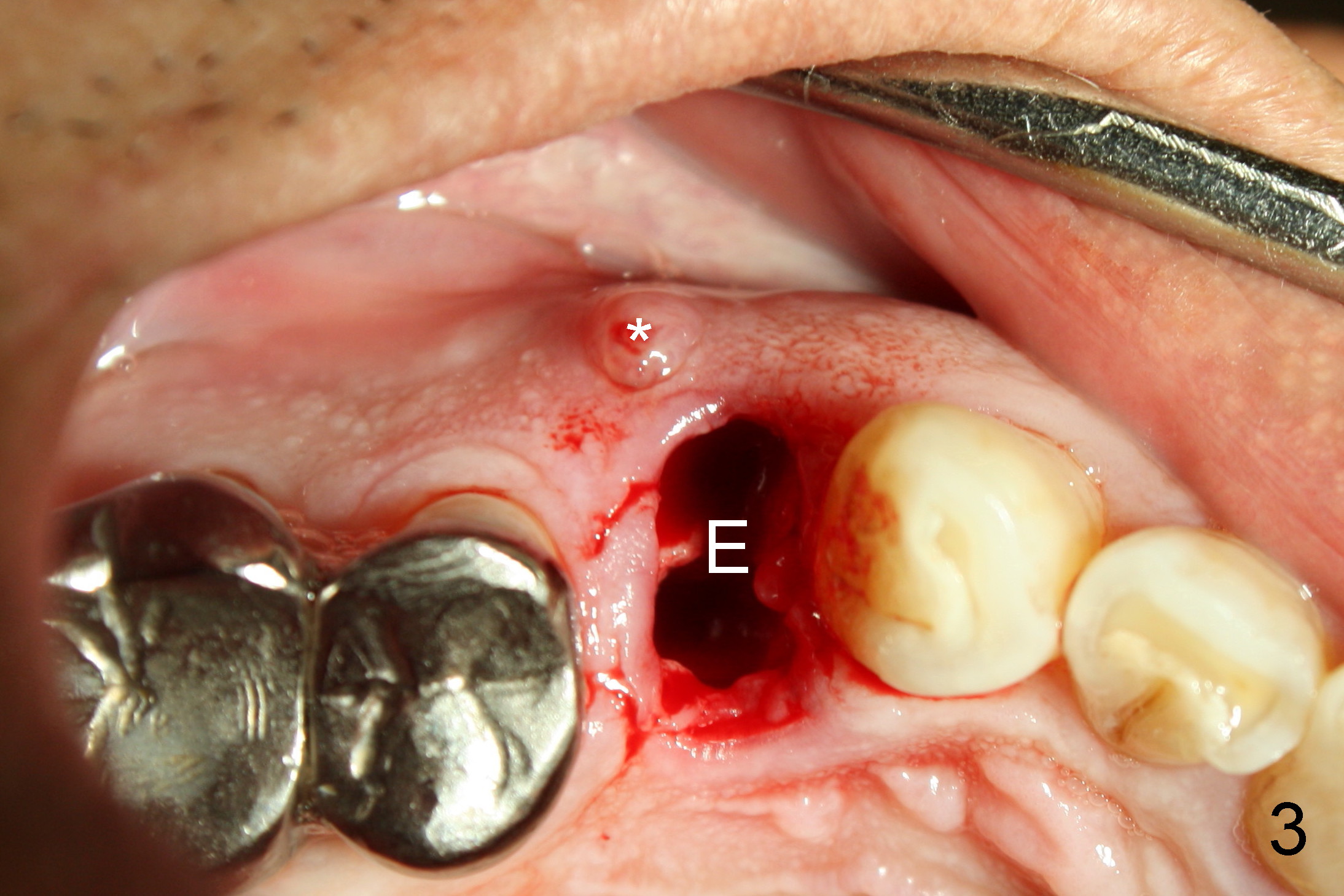
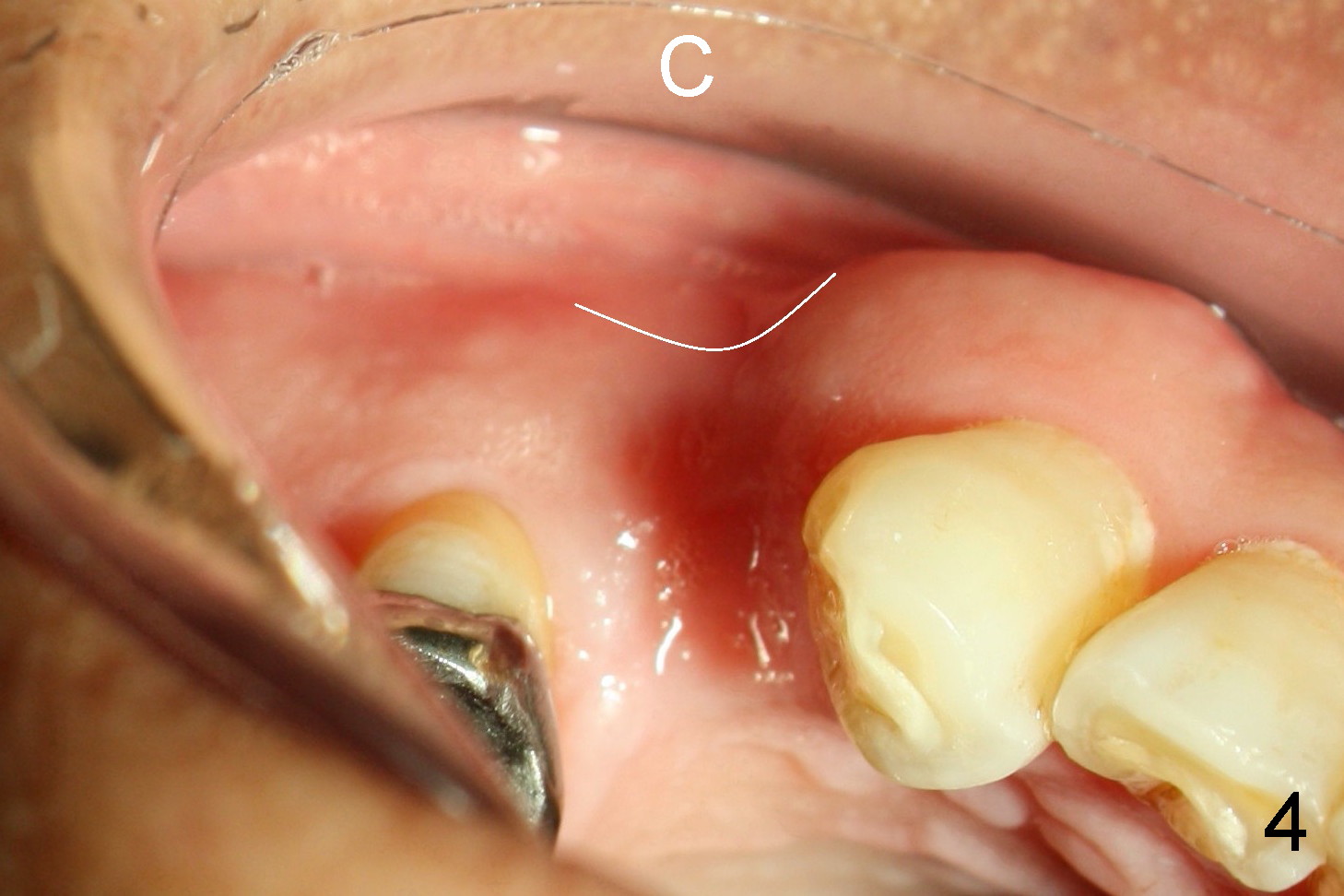
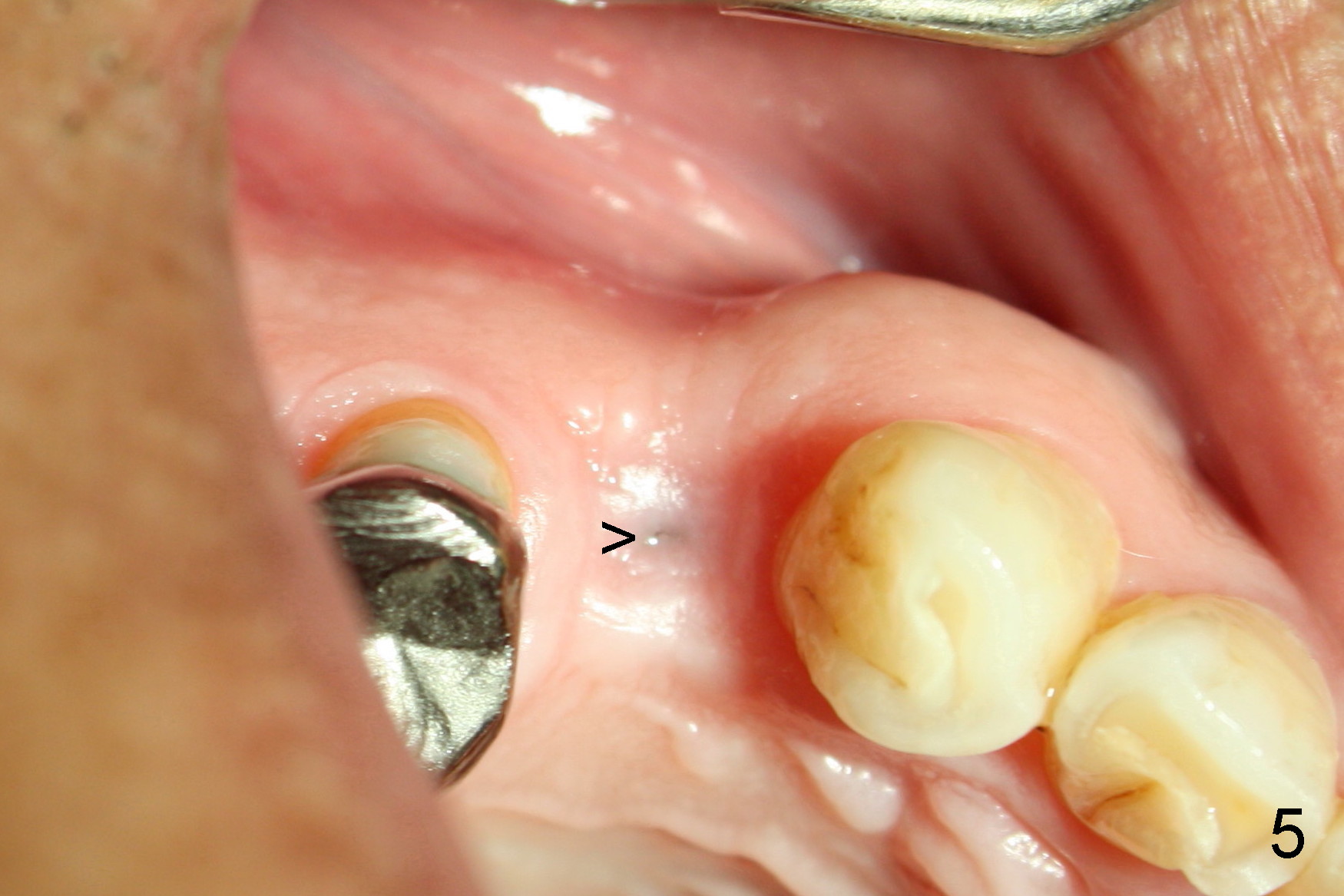
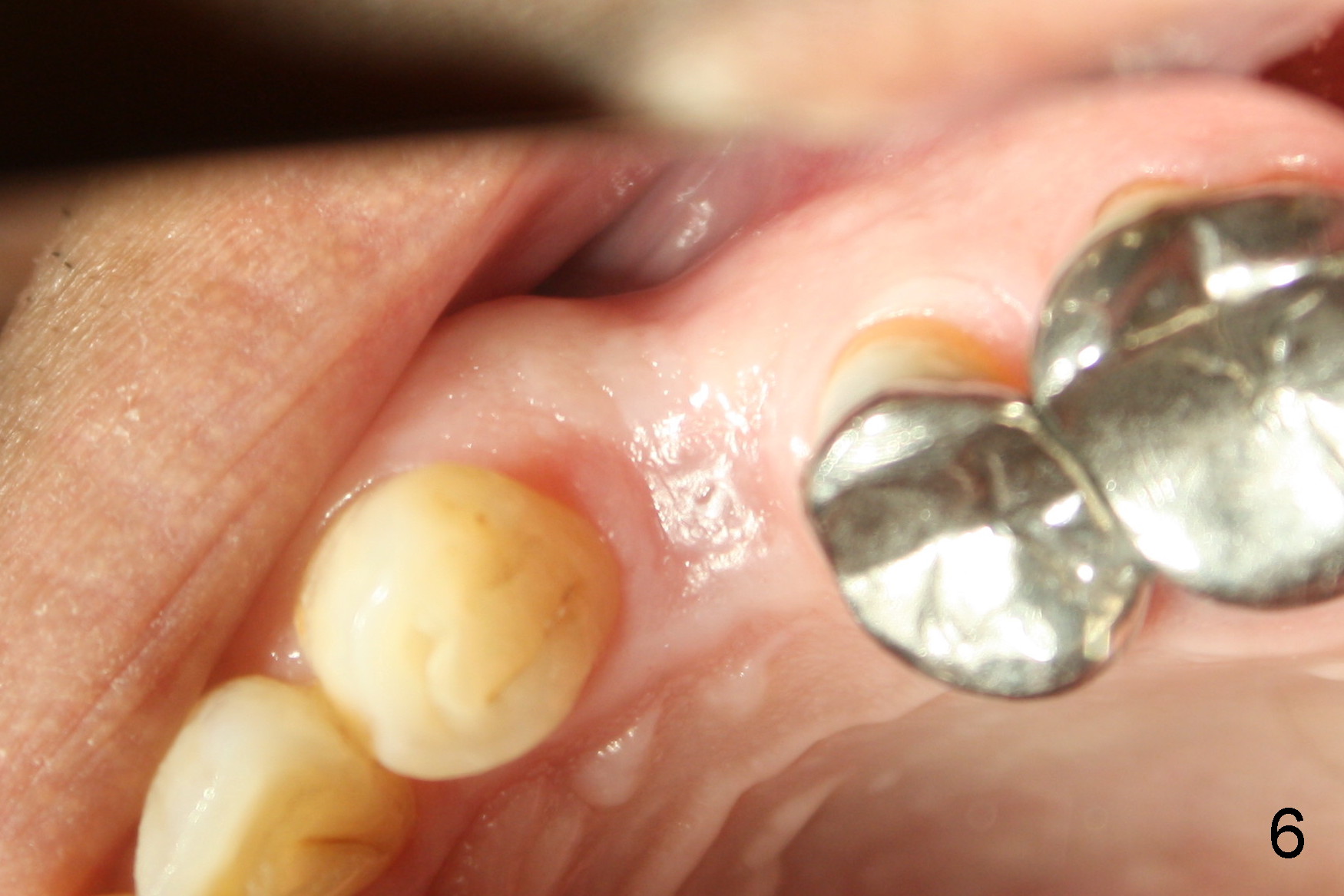
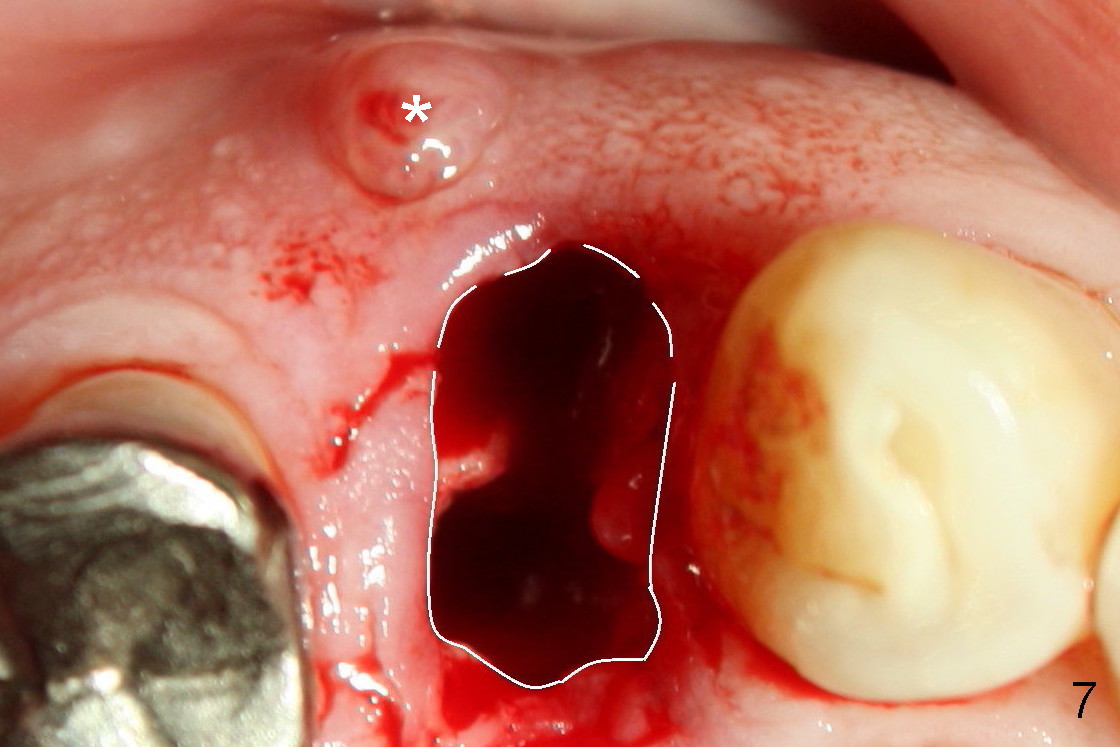
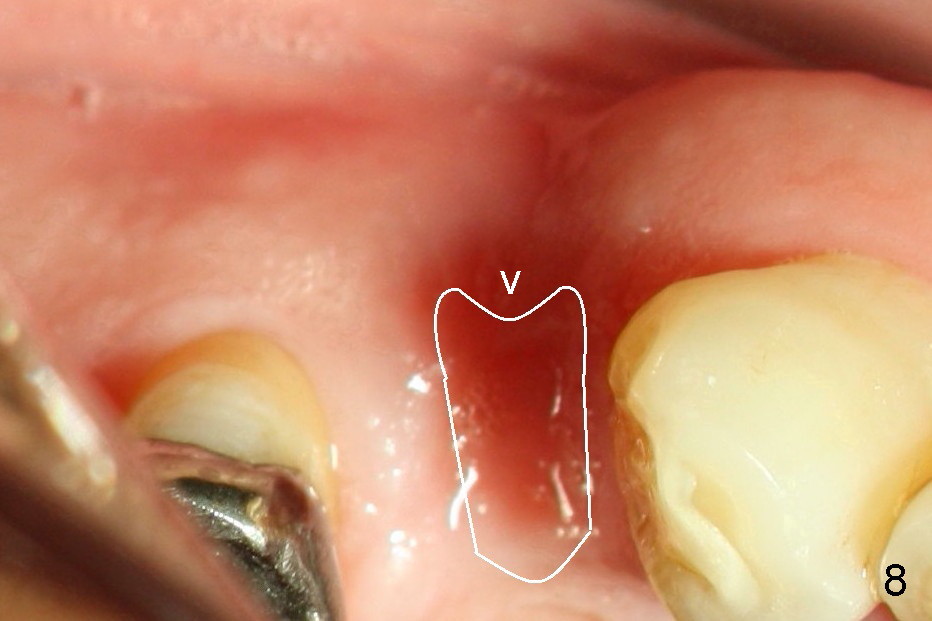
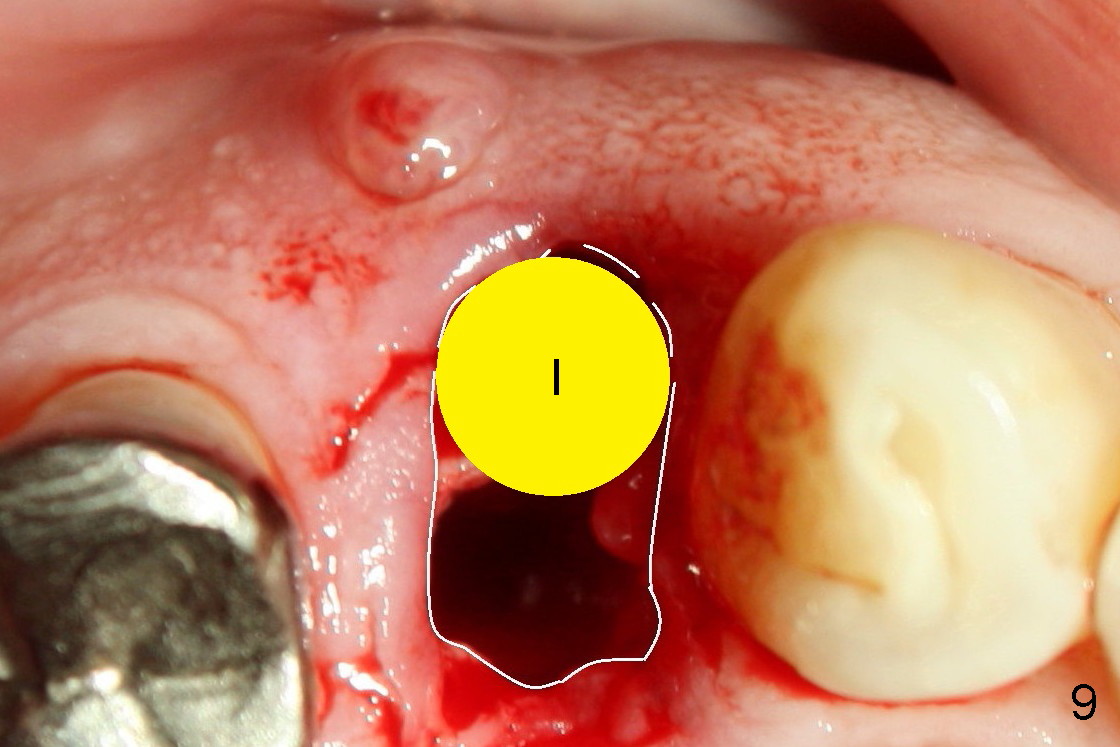
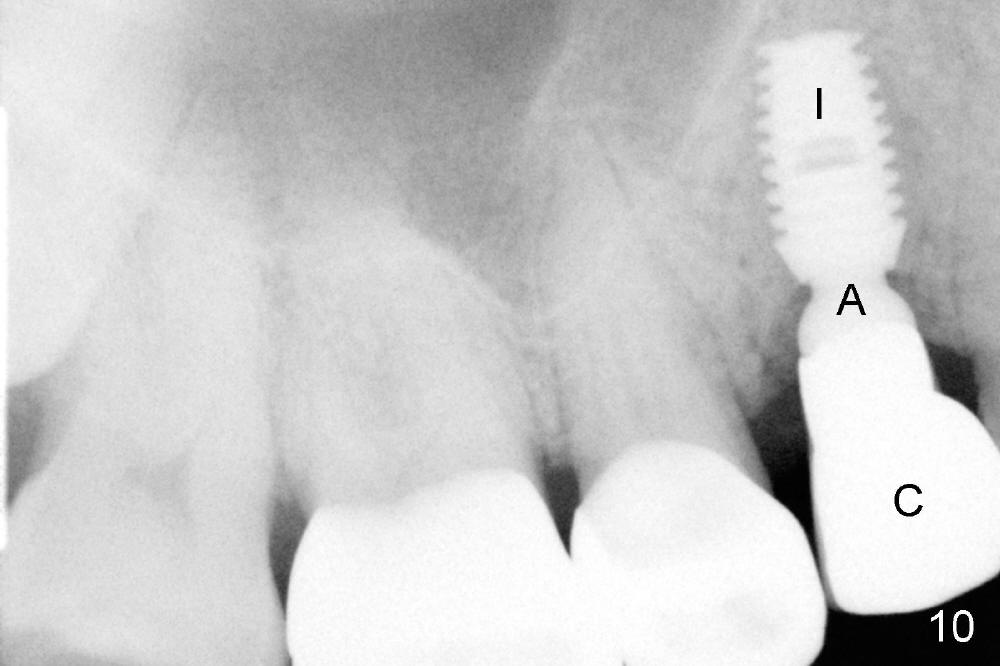
 |
 |
 |
 |
 |
 |
 |
 |
 |
 |
Quick Loss of Bone after Extraction
Before having crowns over two implants in the bottom jaw, Mr. Ding develops abscess in top jaw (Fig.1 *). X-ray reveals severe bone infection (Fig.2 *) associated with a premolar. The tooth is extracted (Fig.3 E, biting surface view). Two and a half months later, the gums on the side of cheek (C) is severely sunken (Fig.4 white line, as compared to Fig.3). An implant is placed shortly. Three months later, the shrinkage has not got worse (Fig.5; > implant under the gums) and remains the same another two months later (Fig.6 mirror image).
The story tells us that the gums shrink rapidly after extraction of the tooth with severe infection. Implant placement on timely manner can prevent further shrinkage. Why do the gums shrink after extraction?
Fig. 7 is an enlarged image of Fig.3. White outline indicates the socket (bone plate around the roots). The bone plate near the abscess (*) is severely damaged due to infection (dashed line). The damaged bone plate collapses inward during healing (Fig.8 (enlarged image of Fig.4): > and white outline). The bone collapse is the basis of gum shrinkage above. The collapse of the bone can be prevented by placement of an implant (Fig.9 I) immediately or shortly after extraction.
Immediate implant placement is not done for this case, because the infection is severe. The best time for implant placement is 6 weeks after extraction. By this time the infection is cleared by our body. The bone starts to grow. Anyway, Mr. Ding's implant is successful. He has used the new tooth, i.e., a crown (Fig.10 C) over abutment (A) and implant (I), for two years now.
Next time Mr. Ding lost his tooth, he chose to have immediate implantation.
Xin Wei, DDS, PhD, MS 1st edition 08/24/2012, last revision 07/08/2014